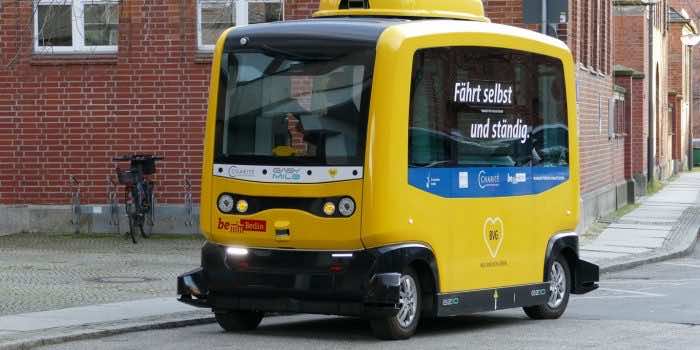According to a new study, a comic pair of googly eyes on the front of a self-driving car could reduce traffic accidents.
Researchers in Japan fitted a golf cart with two large, remote-controlled robotic eyes, that resembled the children’s TV character ‘Brum’. In experiments in virtual reality (VR), they found pedestrians were able to make ‘safer or more efficient choices’ when the eyes were fitted than when they weren’t.
‘There is not enough investigation into the interaction between self-driving cars and the people around them, such as pedestrians,’ said study author Professor Takeo Igarashi at the University of Tokyo.
‘So, we need more investigation and effort into such interaction to bring safety and assurance to society regarding self-driving cars.’

In the future, if we put eyes on self-driving cars, the direction of the eyes would mirror the self-driving car’s vision system. Self-driving cars often use cameras and depth-sensing ‘LiDAR’ units to recognize their surroundings.
The golf cart was not self-driving but driven by one of the researchers. The windshield was covered to make it appear like there was no driver inside.
In all, 18 Japanese participants (nine women and nine men, aged 18-49 years) experienced four scenarios in the VR experience – two when the cart was fitted with eyes, and two when it wasn’t.
In the first scenario, it either looked at the pedestrian (registering their presence) or away (not registering them).
Participants experienced the scenarios several times in random order and were given three seconds each time to decide whether they would cross the road in front of the cart.
The researchers recorded their choices and measured the ‘error rates’ of their decisions.
Overall, participants were able to make safer or more efficient choices when the eyes were fitted to the cart.
Male participants made many dangerous road-crossing decisions (such as choosing to cross when the car was not stopping), but these errors were cut down by the cart’s eye gaze.
Contrarily, the female participants made more inefficient decisions (such as choosing not to cross when the car was intending to stop).

Both actions were reduced by the fitted eyes.
‘The results suggested a clear difference between genders, which was very surprising and unexpected,’ said study author Chia-Ming Chang.
‘While other factors like age and background might have also influenced the participants’ reactions, we believe this is an important point, as it shows that different road users may have different behaviors and needs, that require different communication ways in our future self-driving world.’
‘If eyes can actually contribute to safety and reduce traffic accidents, we should seriously consider adding them,’ said Igarashi.
‘In the future, we would like to develop automatic control of the robotic eyes connected to the self-driving AI instead of being manually controlled, which could accommodate different situations.’


